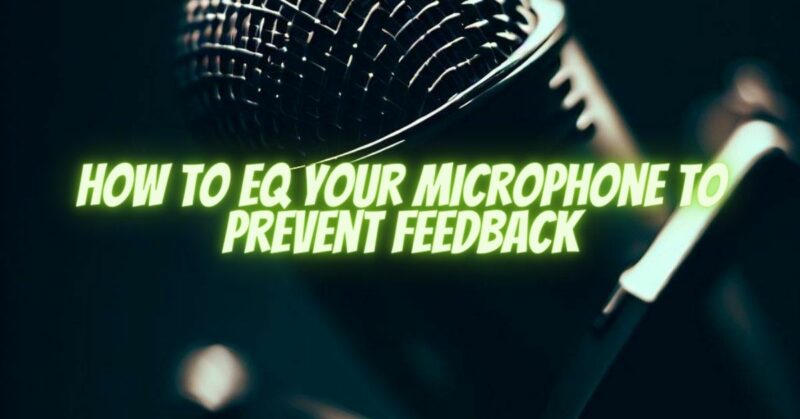Feedback can be a frustrating issue when using a microphone, causing unwanted squeals and screeches that disrupt performances or presentations. However, with proper equalization (EQ) techniques, you can tame feedback and achieve clear and balanced sound. In this article, we’ll guide you through the process of EQing your microphone to prevent feedback, ensuring a seamless and professional audio experience. Get ready to take control of your sound and deliver feedback-free performances!
- Understanding the Feedback Loop: Before diving into EQ techniques, it’s crucial to grasp the concept of the feedback loop. Feedback occurs when sound from the speakers is picked up by the microphone, amplified, and re-amplified in a continuous loop. EQing your microphone helps to break this loop by reducing problematic frequencies.
- Identify and Address Problematic Frequencies: Start by identifying the frequencies that tend to cause feedback. These are often in the low-mid to high-mid range, typically between 200Hz and 6kHz. Use a graphic equalizer or a parametric EQ to pinpoint and attenuate these frequencies, reducing the likelihood of feedback.
- Roll-Off Low-End Frequencies: To minimize low-end rumble and potential feedback caused by handling noise or stage vibrations, consider applying a high-pass filter (or low-cut filter) to roll off frequencies below a certain threshold (e.g., 80Hz). This helps to maintain clarity while reducing the risk of low-frequency feedback.
- Tame Harshness and Resonance: Addressing harsh or resonant frequencies can significantly improve the overall sound quality and help prevent feedback. Use a narrow Q-factor or bandwidth setting on your EQ to pinpoint and reduce these frequencies, especially in the midrange where they are most prevalent.
- Notch Filters for Persistent Feedback: Persistent or narrow-band feedback issues may require more targeted intervention. Use notch filters to surgically eliminate specific frequencies that consistently cause feedback. Experiment with the frequency and width of the notch filter until the feedback is effectively eliminated without compromising the overall audio quality.
- Monitor and Test: Throughout the EQing process, it’s crucial to monitor and test your microphone to ensure the desired results. Use headphones or speakers to listen for any remaining feedback or audio anomalies. Adjust your EQ settings accordingly until you achieve a balanced, feedback-free sound.
- Experiment and Adapt: Remember that each performance venue and microphone setup is unique, so be prepared to experiment and adapt your EQ settings accordingly. Factors such as room acoustics, microphone positioning, and volume levels can influence the presence of feedback. Continuously refine your EQ adjustments to optimize your sound in different environments.
Conclusion:
EQing your microphone is an essential skill for preventing feedback and achieving optimal audio performance. By identifying problematic frequencies, rolling off low-end rumble, taming harshness and resonance, and utilizing notch filters when needed, you can take control of your sound and deliver feedback-free performances. Remember to monitor, test, and adapt your EQ settings to suit each specific situation. With practice and attention to detail, you’ll be able to harness the full potential of your microphone while maintaining a pristine and professional audio experience.


